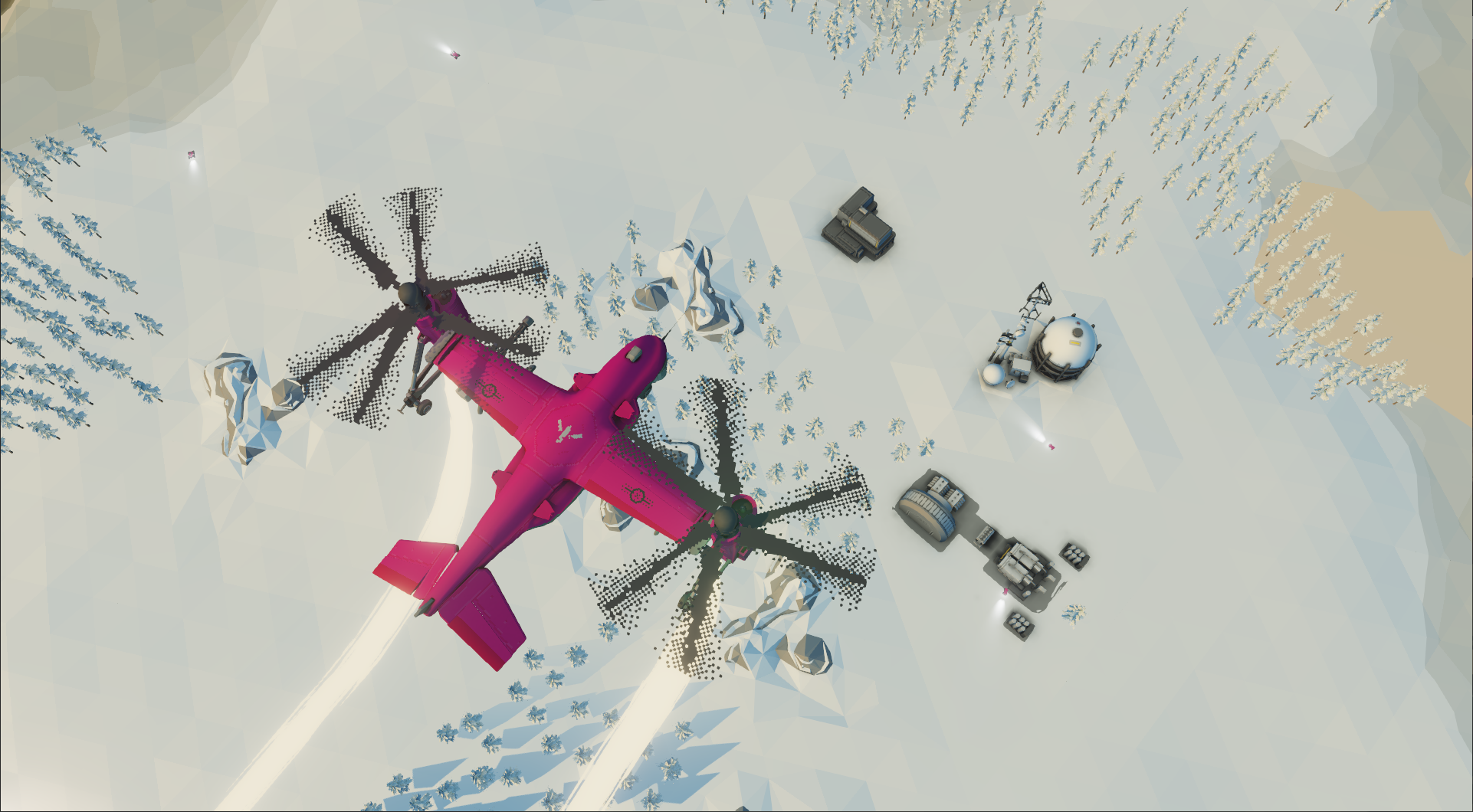Developer Spotlight - The Vehicle Control Station

Dear players,
In developer spotlight posts, we discuss the detail and ideas behind Carrier Command 2.
In this post, we discuss the vehicle control station where you deploy, manage, and control the unmanned amphibious and aerial vehicles from the carrier.
This is the main terminal for fighting over and capturing islands. In fact, this terminal is so central to the strategy gameplay, that there are 3 identical terminals for use in multiplayer, where many players can cooperate and coordinate their strategies together.
At this station, you use the vehicle control screen. The vehicle control screen has 2 modes: map mode and vehicle control mode.

Map Mode
The map mode is a simple map view, showing your own units and enemy units. You can select units to show their context menu, or drag units to issue orders such as moving or attacking.
You can zoom in and out, and pan to inspect the entire theatre of battle. All necessary information for a battle is available in map mode, in a simple, readable format, with detail hidden in tooltips.
Vehicles can be given several order types by simple dragging. Dragging a unit into open space creates a move order, dragging onto a team vehicle creates a support / follow order, dragging onto an enemy vehicle creates an attack order, dragging onto the carrier creates a dock order, and dragging onto its own waypoint creates a looping path. To extend move orders, players can simply drag the last waypoint to extend the route.

Vehicle Control Mode
When pressing the vehicle control button on the map, the screen transitions to vehicle control mode. This is a first person view from the selected vehicle.
From this view, you can select the various attachments on the vehicle, and take manual control of flight, cameras, and / or weapons. Control is toggled separately so you can take complete control, just drive and allow the AI or another player to gun, or vice-versa.
In vehicle control, the HUD is contextual and shows the HUD controls for the current vehicle type and weapon you have selected. Aircraft and land vehicles have different HUD indicators, and different weapon types have different targeting reticules and information.

We are really enjoying designing and developing these features and have a lot more to discuss.
What details or systems would you like to know more about? Let us know in the comments!
Much love
The Carrier Command Developers






